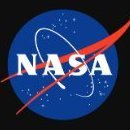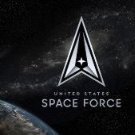Members Can Post Anonymously On This Site
NASA to Welcome Expedition 72 Astronauts Home at Space Center Houston
-
Similar Topics
-
By Space Force
Secretary of the Air Force Troy Meink toured Mission Delta 3 (Electromagnetic Warfare) at Peterson Space Force Base, Colorado, May 28, 2025.
View the full article
-
By European Space Agency
The deadline to apply for ESA’s Junior Professional Programme (JPP) is fast approaching, with applications closing on 5 June. The JPP is a unique opportunity for recent graduates and early-career professionals to gain hands-on experience at one of the world’s leading space organisations. Successful candidates will work on real ESA projects alongside experienced experts in fields ranging from engineering and science to business and administration. If you are ready to take the first step towards a future in space, don’t miss this opportunity. Submit your application before the 5 June deadline.
View the full article
-
By European Space Agency
Image: The Copernicus Sentinel-3 mission shows us a rare, cloud-free view of Iceland captured on 17 May 2025. View the full article
-
By European Space Agency
Video: 00:02:46 For half a century, the European Space Agency (ESA) has been serving Europe as its space agency and inspiring its citizens. On 30 May 1975, the ESA Convention was signed by 10 founding Member States and has since now expanded to 23 Member States, three Associate Members, four Cooperating States and a Cooperation Agreement with Canada. This anniversary year provides the opportunity to reflect not only on ESA’s past achievements, but even more so on its future perspectives.
View the full article
-
By NASA
2 min read
Preparations for Next Moonwalk Simulations Underway (and Underwater)
Boost Treadmills cofounder Sean Whalen runs on the Boost 2. The treadmill uses air pressure to counter gravity, making running possible for people with injuries and other conditions.Credit: Boost Treadmills LLC The antigravity treadmill, which has benefits in space and on Earth, was pioneered by Robert Whalen at NASA’s Ames Research Center in Silicon Valley, California, in the 1980s and ’90s.
Whalen built a system that placed a pressurized bulb over the user’s upper body, creating downward pressure that could simulate gravity for astronauts running on a treadmill in space. With support from Ames, he prototyped a treadmill in his garage that reversed the concept, with the bubble enclosing the user from the waist down to create lift. He thought the system could help patients rehabilitate.
Years later, his son recalled the prototype in the garage and turned it into the AlterG concept. The AlterG treadmill, which uses air pressure to take weight off the user, had proven popular with professional sports teams and rehabilitation clinics, but Whalen and his friends wanted to make it affordable enough for home use, so they founded Boost Treadmills in 2017.
Now Boost, based in Palo Alto, California, has cut the price of an antigravity treadmill by almost two thirds. In 2022, the company released the Boost 2, which is quieter and more energy-efficient than its predecessor, among other improvements. The Boost 2 has roughly tripled sales to individuals, progressing on the company’s goal of moving into the home.
Offloading weight during exercise is a clear solution for patients whose injuries prevent them from walking or running at their full weight, but Boost says it can be equally valuable for people with long-term mobility impairments, such as obesity or arthritis.
Advanced through NASA, the antigravity treadmill is one of many space-inspired technologies benefitting life on Earth.
Read More Share
Details
Last Updated May 29, 2025 Related Terms
Technology Transfer & Spinoffs Spinoffs Technology Transfer Explore More
3 min read Winners Announced in NASA’s 2025 Gateways to Blue Skies Competition
Article 1 week ago 3 min read Meet Four NASA Inventors Improving Life on Earth and Beyond
Article 3 weeks ago 2 min read NASA Technology Enables Leaps in Artificial Intelligence
Artificial intelligence lets machines communicate autonomously
Article 1 month ago Keep Exploring Discover Related Topics
Missions
Humans in Space
Technology Transfer & Spinoffs
Tranquility Module
View the full article
-
-
Check out these Videos




Recommended Posts
Join the conversation
You can post now and register later. If you have an account, sign in now to post with your account.
Note: Your post will require moderator approval before it will be visible.